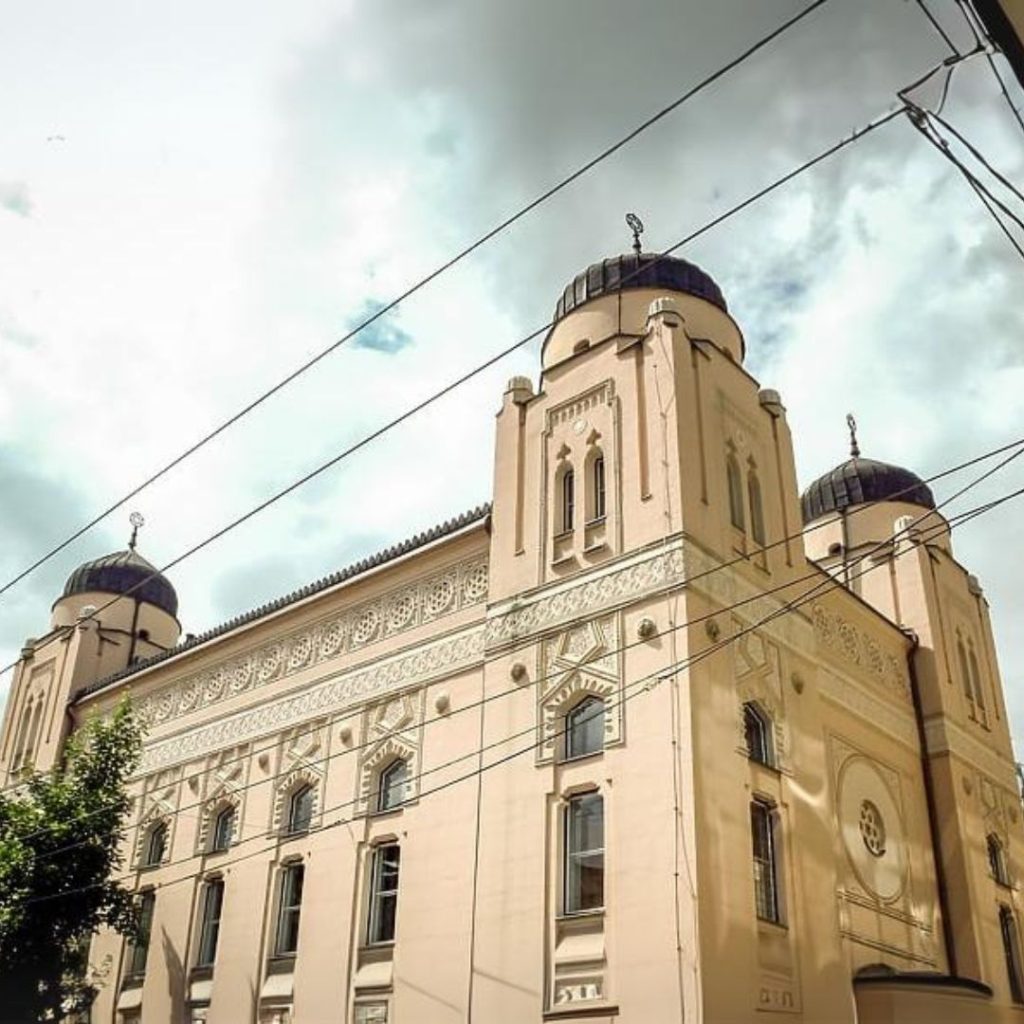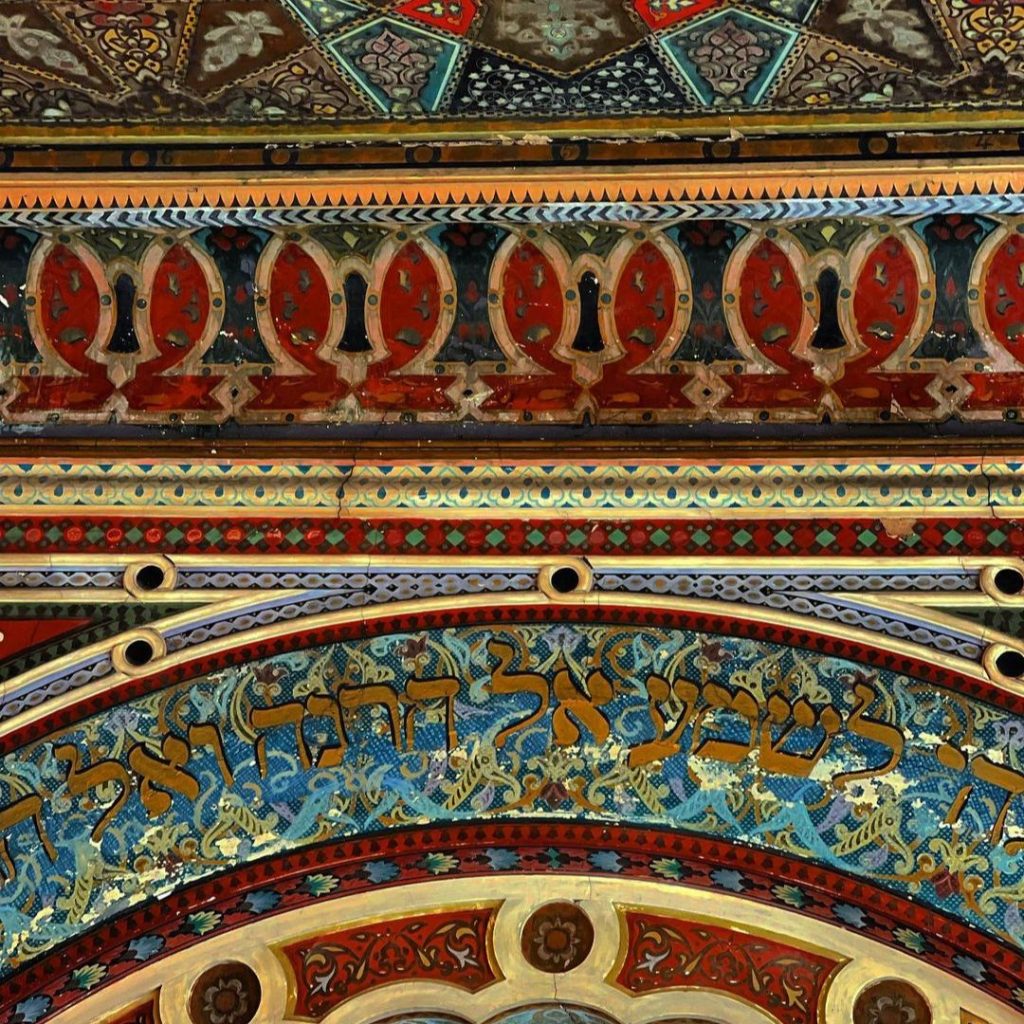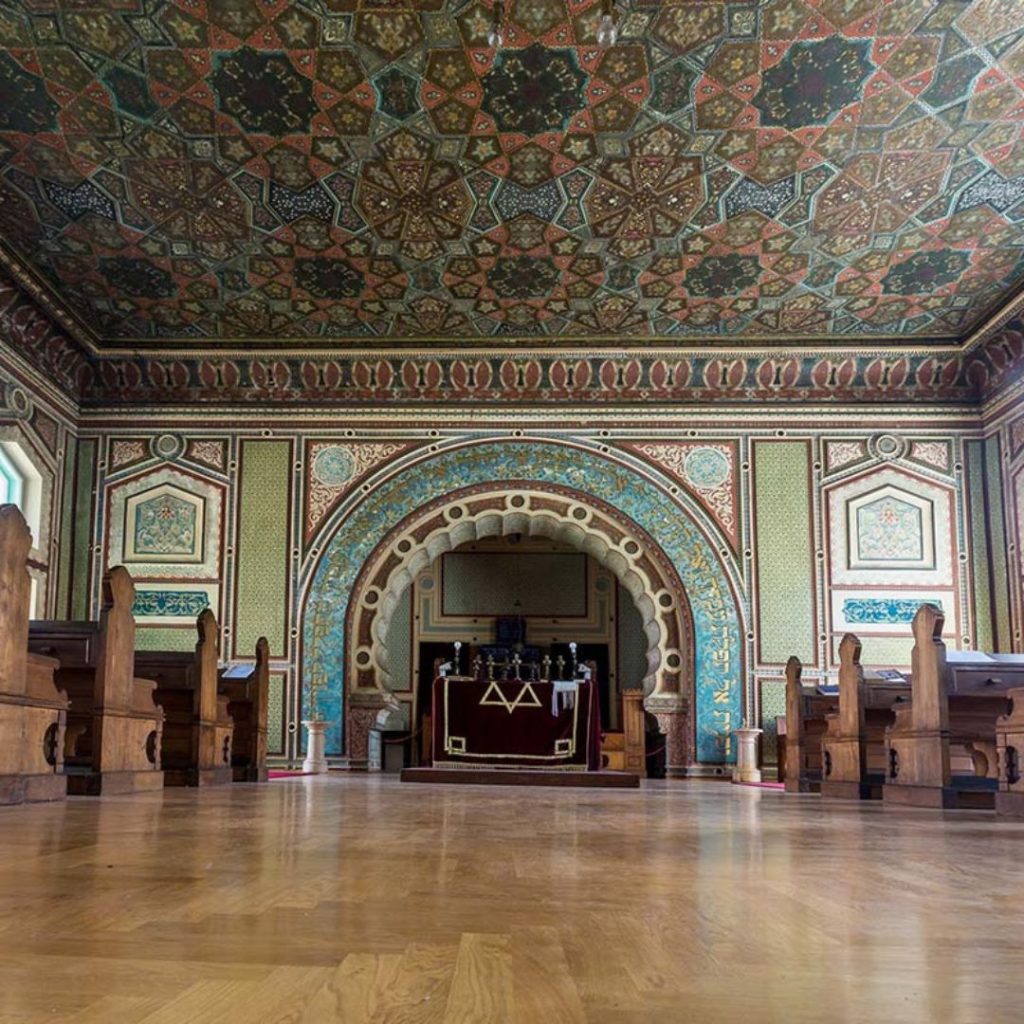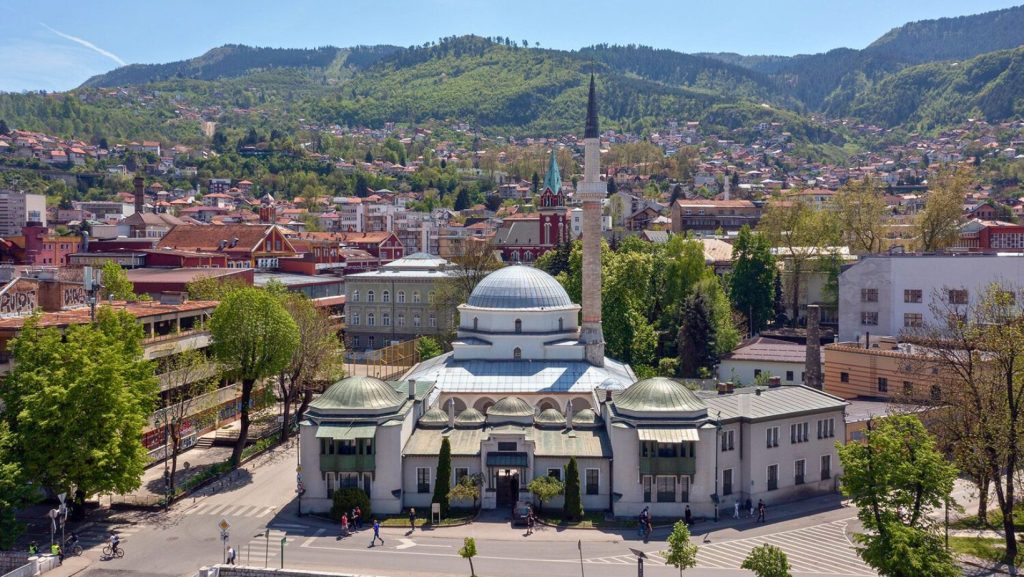
…the third largest synagogue in Europe…
The Ashkenazi Jewish community in Sarajevo dates back to the late 19th century when they settled in the area after 1878. They brought with them their own distinct language, culture, and traditions, setting them apart from the Sephardic Jews who had been in Sarajevo since the 16th century.
Architectural Beauty

The synagogue’s architecture is an intriguing blend of styles, featuring elements of Moorish and Mudejar architecture, which are rare in this part of Europe. It stands as a prime example of the eclectic architectural influences that Sarajevo experienced during the late 19th century.
Intricate Decorations
The façade of the Ashkenazi Synagogue is adorned with intricate decorative elements, including floral motifs, geometric patterns, and Arabic-inspired designs. These decorations reflect the influences of Islamic art and architecture that were prevalent in the region.
Distinctive Features

The synagogue boasts unique features such as corner towers topped with domes and a richly decorated roofline. These architectural elements add to the distinctive character of the building.
Religious Significance
Inside the synagogue, you can find the Aron Hakodesh, the sacred ark where the Torah scrolls are kept. It is situated in the eastern part of the building, facing Jerusalem, in accordance with Jewish tradition.
Historical Transformation
Over the years, the synagogue has undergone several modifications, including the division of its interior into two levels in the 1960s. This transformation preserved its architectural beauty while adapting to the evolving needs of the community.
Part of a Larger Community
In addition to the Ashkenazi Synagogue, Sarajevo is home to other Jewish religious buildings, including the Old Jewish Temple (Stari Hram) and the Sephardic Synagogue. These synagogues, each with its unique history, contribute to the rich tapestry of Sarajevo’s Jewish heritage.
Today, this is the only Sarajevo synagogue where religious ceremonies take place regularly.



